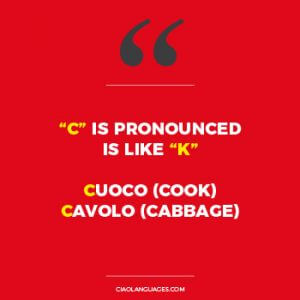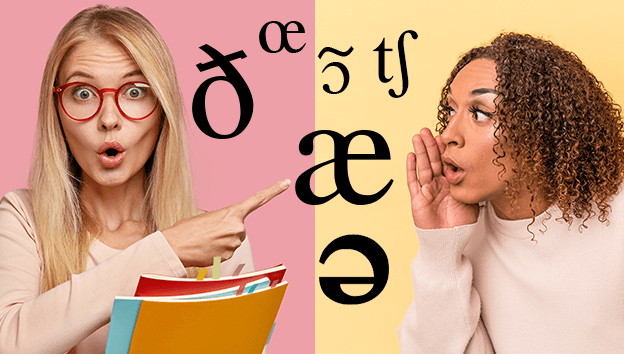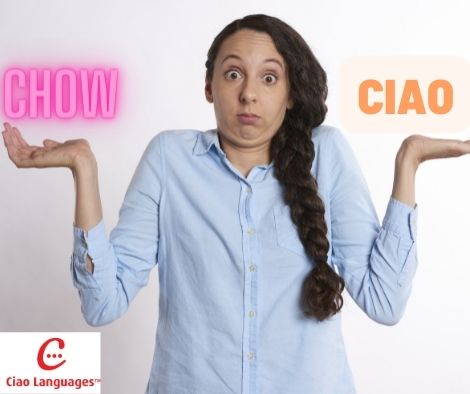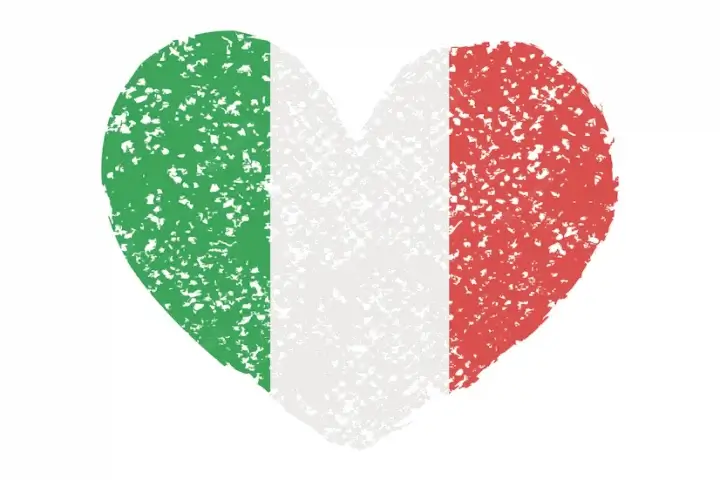So, you want to know how to pronounce Italian? How do you go about it?
In the US we hum along to tunes whose lyrics we neither understand nor remember. Italians sing entire songs from memory, from intro to chorus to bridge, without leaving out a word. That is in part because Italian is an enviably clear language. Its pronunciation is easy, as anything in Italian can be pronounced by sounding aloud the written word. Think about the next time you attempt to sing the lyrics of a Red Hot Chili Peppers song.
Let’s take a look at the mechanics of Italian pronunciation.
Pronunciation:
Italian, like many languages that are not English, is pronounced exactly the way it is written. All you have to do is look at an Italian word and sound it out, syllable by syllable.
The first step to learning in Italian is learning the way the printed word is pronounced.
Here is a brief break-down of Itlian pronunciation:
Vowels – A, E, I, O, U [I’ll used phonetic symbols from IPA for this].
 “A” is pronounced /a/, much the way we say “Ah” in English, as in “Ah, what a surprise.”
“A” is pronounced /a/, much the way we say “Ah” in English, as in “Ah, what a surprise.”
“E” is pronounced /e/, similarly to the way that we pronounce the letters “ay” in English.
“I” is pronounced /i/, which is nearly identitical to the sound “ee” makes in English.
“O” is pronounced /o/, fairly closely to the way we say “Oh” in English.
“U” is pronounced /u/. This is bit difficult to compare to English. The best approximation is the sound “oo” makes in the word “moon.”
Now that you know these simple elements of Italian pronunciation, try sounding out the following words.
“Sale” (‘salt’ or ‘He goes up’) – If you said something resembling /sale/, or “Sah-lay”, Good! Excellent!
“Piove” (‘It’s raining.’) – If you said something resembling /piove/, or “Pee-Oh-Vay”, you are on the right track! You’re getting the hang of it.
Extra credit question:
“Salgo le scale” (‘I go up the stairs’) – Here it is /salgo le scale/, “Sal – Go – Lay – Scah – Lay.” Sei un genio (‘You’re a genius!’).
The crispness of Italian vowels
The most important thing to remember here is that the vowel sounds are crisp and clear, very different from the way we English speakers pronounce them. Think of the way you say “Oh” in English. Your mouth moves around the vowel, as if you were chewing gum or eating something. If the English “Oh” were a shape, it would be a trippy elliptical shape and not a perfect circle.
The Italian “O” on, on the other hand, is a perfect circle. In fact, when you say “O” in Italian, your mouth stays completely motionless, giving the vowel its definitive shape.
Italian dipthongs
A dipthong is a combination of vowels resulting in a different sound from its constituent parts. For example, in Italian, if you combine “A” and “I”, you get the sound /aɪ/, which corresponds to the sound made in the English word “eye.”
“ai” – /aɪ/ = Sound from “eye.” Some examples of this include “Dai” (‘You give’), “Mai” (Never), “Sai” (‘You know’), “Parlai” (‘I spoke’).
“ei” – /eɪ/ = The long-a sound in the word “face” is fairly similar to the sound. Some examples include “sei” (you are), “miei” (the plural possessive adjective of ‘my’), “Dei” (gods)
“au” – /aʊ/ = Similar to the sound in the English word “mouth”. Examples include, “paura” (‘fear’), “Mauro” (the name ‘Mauro’) and “restauro” (restoration).
“oi“ – /“ɔɪ”/ = Easy! It’s just like the English “oy,” as in the word “boy.” Examples include “poi” (‘then’), “noioso” (‘boring’), “annoiarsi” (‘to get bored’) or “Pistoia” (the Italian city ‘Pistoia’).
Just as Italians appreciate crispness in vowels, it’s important to settle on a position of the mouth and keep it uniform when you pronounce dipthongs, too. Distorted vowels and dipthongs can be impediments to making yourself understood when you are speaking in Italian.
This concludes our article about pronunciation of Italian vowels and dipthongs! There are lots of ways that you can learn Italian. Nowadays, many people prefer to use applications such as Babbel, Duolingo, Rosetta Stone, Pimliseur, which are all terrific products. The only problem that might come up is that the apps don’t talk back to you, encourage and coach you the way that a live teacher can.

At Ciao Languages, we help you learn how to speak Italian!
At Ciao Languages, we offer a simple solution. Free of charge, we give you the language learning application “Mango Languages” if you sign up for one of our language courses. All of our language instructors are native speakers of Italian and we have developed our own unique method for teaching Italian online, which is based on the theory of gradual and staggered active recall. All of them are trained in the use of our purpose-made language learning materials and we ensure that students all have access to a video-recording of their lessons after its over.
If you would like to learn Italian with a native speaker and not just an application, contact us for a free consultation. We are located in Orange County, California, but we serve Los Angeles, San Diego and all of California and the Western seaboard. We work with native speakers from all over the world, bringing them to you via Zoom. All of our teachers are experieced professionals that we work with closely to guarantee high-quality language instruction. For more information about our courses, you can consult our course catalog page and/or fill out the contact form below.
We hope you have found this information useful. We hope to work with you soon to help you learn Italian!




